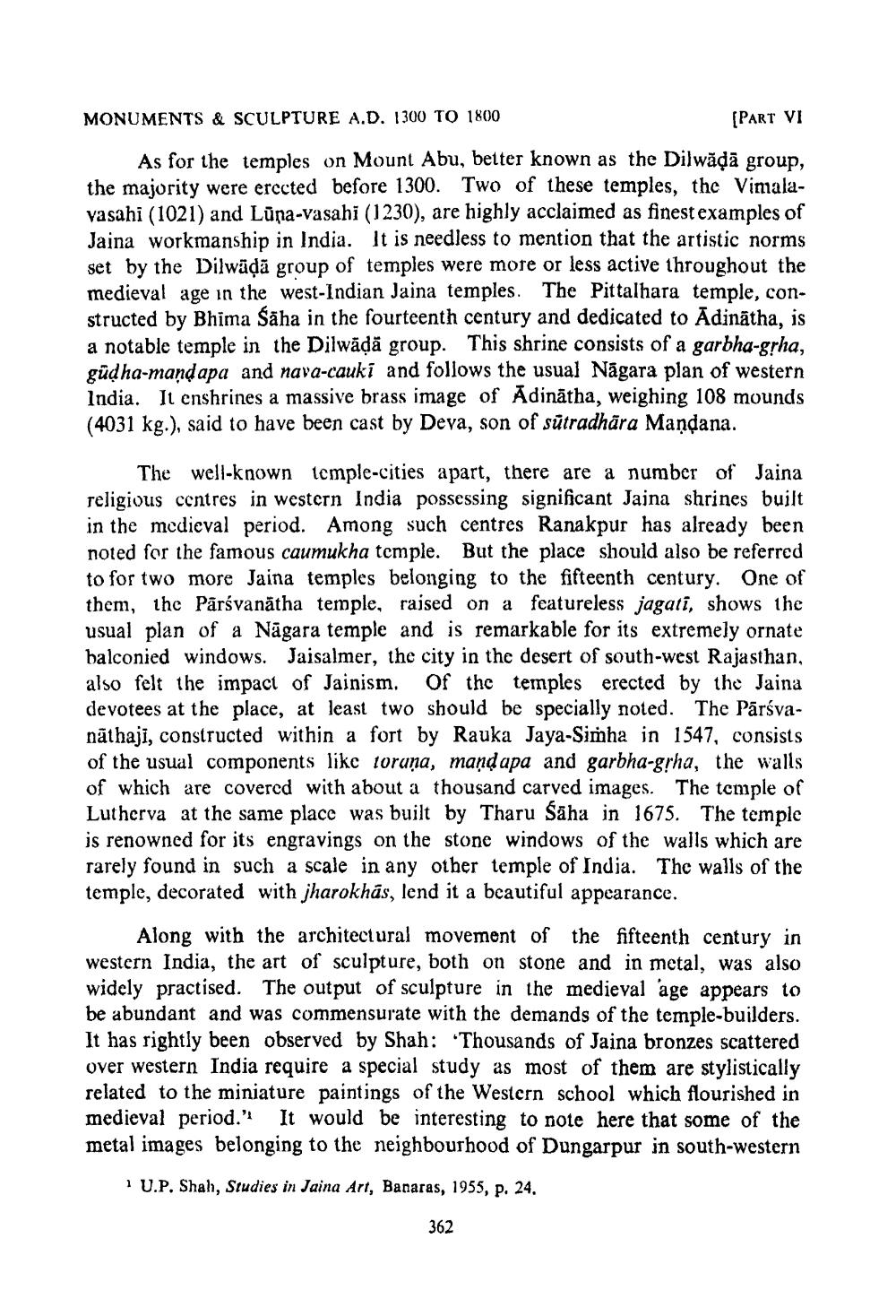________________
MONUMENTS & SCULPTURE A.D. 1300 TO 1800
(PART VI
As for the temples on Mount Abu, better known as the Dilwādā group, the majority were erected before 1300. Two of these temples, the Vimalavasahi (1021) and Lūna-vasahi (1230), are highly acclaimed as finest examples of Jaina workmanship in India. It is needless to mention that the artistic norms set by the Dilwādā group of temples were more or less active throughout the medieval age in the west-Indian Jaina temples. The Pittalhara temple, constructed by Bhima Sāha in the fourteenth century and dedicated to Adinātha, is a notable temple in the Dilwāļā group. This shrine consists of a garbha-grha, güd ha-mand apa and nava-cauki and follows the usual Nāgara plan of western India. It enshrines a massive brass image of Adinātha, weighing 108 mounds (4031 kg.), said to have been cast by Deva, son of sūtradhāra Mandana.
The well-known tcmple-cities apart, there are a number of Jaina religious centres in western India possessing significant Jajna shrines built in the medieval period. Among such centres Ranakpur has already been noted for the famous caumukha temple. But the place should also be referred to for two more Jaina temples belonging to the fifteenth century. One of them, the Pārsvanātha temple, raised on a featureless jagati, shows the usual plan of a Nägara temple and is remarkable for its extremely ornate balconied windows. Jaisalmer, the city in the desert of south-west Rajasthan, also felt the impact of Jainism. Of the temples erected by the Jaina devotees at the place, at least two should be specially noted. The Pārsvanāthaji, constructed within a fort by Rauka Jaya-Simha in 1547, consists of the usual components like toruña, maņd apa and garbha-grha, the walls of which are covered with about a thousand carved images. The temple of Lutherva at the same place was built by Tharu Säha in 1675. The temple is renowned for its engravings on the stone windows of the walls which are rarely found in such a scale in any other temple of India. The walls of the temple, decorated with jharokhās, lend it a beautiful appearance.
Along with the architectural movement of the fifteenth century in western India, the art of sculpture, both on stone and in metal, was also widely practised. The output of sculpture in the medieval age appears to be abundant and was commensurate with the demands of the temple-builders. It has rightly been observed by Shah: “Thousands of Jaina bronzes scattered over western India require a special study as most of them are stylistically related to the miniature paintings of the Western school which flourished in medieval period. It would be interesting to note here that some of the metal images belonging to the neighbourhood of Dungarpur in south-western
U.P. Shah, Studies in Jaina Art, Banaras, 1955, p. 24.
362




